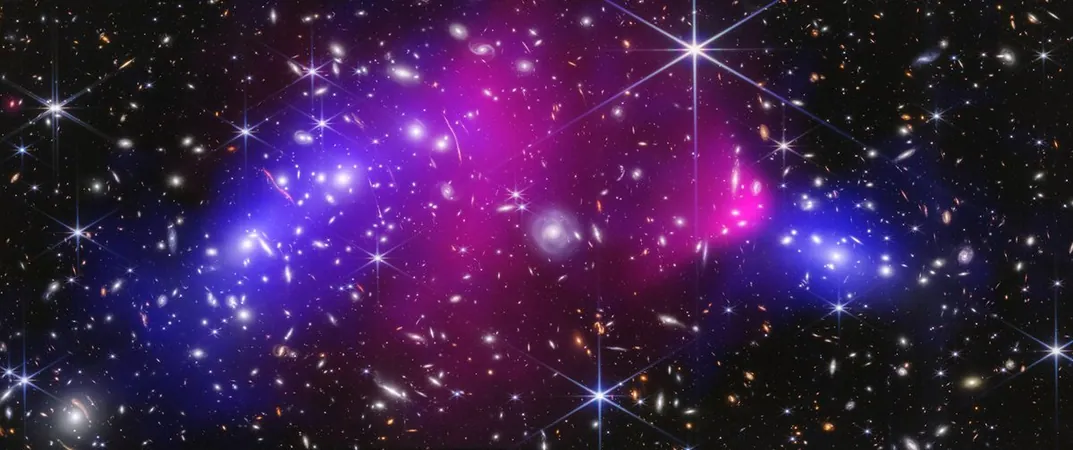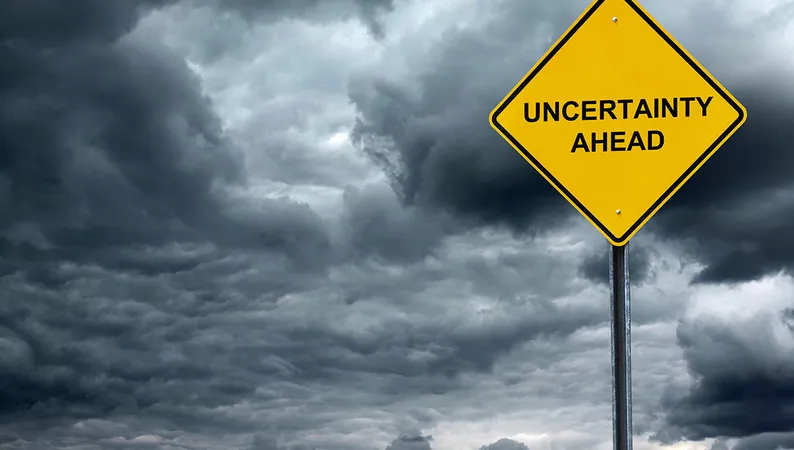
Lightning Collision Sparks Mind-Blowing Gamma Ray Burst: Here's What Happened!
2025-05-25
Author: John Tan
Have you ever wondered what happens at the moment two lightning strikes collide? Prepare to be amazed! Scientists have recently observed an astonishing event: a powerful blast of gamma rays, bursting with energy millions of times more potent than a standard lightning strike.
This extraordinary phenomenon, known as a terrestrial gamma-ray flash, is akin to cosmic explosions that occur in deep space during supernovae—yet this spectacular display unfolded right here on Earth, and thankfully, it poses little threat to us.
A groundbreaking study from researchers in Japan has captured this rare event for the first time, revealing how these gamma-ray bursts are generated during lightning collisions. Published in *Science Advances*, this research marks a significant leap in our understanding of these energetic events within storm clouds.
Thunderclouds are more than just stormy skies—they also hide a treasure trove of gamma rays. Despite this being known for nearly 30 years, the exact processes that lead to these flashes, sometimes called "dark lightning," have baffled scientists—until now.
The prevailing theory is that thunderclouds act as natural particle accelerators, propelling electrons to nearly the speed of light, causing them to clash with air molecules and unleash gamma rays, which can sometimes even produce antimatter.
However, observing these flashes has proven to be a formidable challenge. While lightning strikes are difficult to predict, a staggering number—about a thousand—of discharges occur for every single gamma flash produced. Plus, these flashes last for less than a millisecond, vanishing almost instantly into the atmosphere.
Yuuki Wada, the lead author and researcher from the University of Osaka, explained, "Most TGFs have been detected by satellites, but these observations provide limited insights. Our study offers a closer look using ground-based techniques."
To capture this elusive dark lightning, the team employed a sophisticated multi-sensor system to collect various measurements—optical, radio frequency, and high-energy data—from lightning storms, focusing particularly on TV transmission towers, which are frequent targets for lightning.
Finally, the moment of truth arrived! A lightning strike, splitting into two arcs, collided 2,600 feet above the ground. Just 31 microseconds before their dramatic intersection, the researchers detected a gamma flash, which lasted a mere 20 microseconds but was crucial in linking conventional lightning to dark lightning for the very first time.
Senior author Harufumi Tsuchiya celebrated this achievement, noting, "This multi-sensor technique is a world-first. Although we still have questions, we've made significant progress in understanding these incredible radiation bursts."
Stay tuned as scientists continue to unravel the mysteries of lightning and the phenomena it produces—who knows what other surprises lie in the stormy skies above?




 Brasil (PT)
Brasil (PT)
 Canada (EN)
Canada (EN)
 Chile (ES)
Chile (ES)
 Česko (CS)
Česko (CS)
 대한민국 (KO)
대한민국 (KO)
 España (ES)
España (ES)
 France (FR)
France (FR)
 Hong Kong (EN)
Hong Kong (EN)
 Italia (IT)
Italia (IT)
 日本 (JA)
日本 (JA)
 Magyarország (HU)
Magyarország (HU)
 Norge (NO)
Norge (NO)
 Polska (PL)
Polska (PL)
 Schweiz (DE)
Schweiz (DE)
 Singapore (EN)
Singapore (EN)
 Sverige (SV)
Sverige (SV)
 Suomi (FI)
Suomi (FI)
 Türkiye (TR)
Türkiye (TR)
 الإمارات العربية المتحدة (AR)
الإمارات العربية المتحدة (AR)